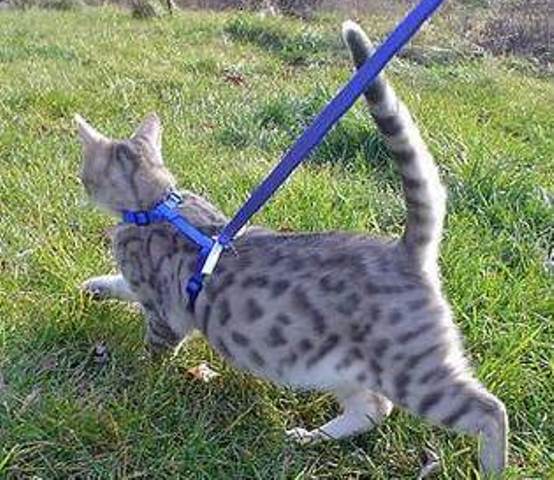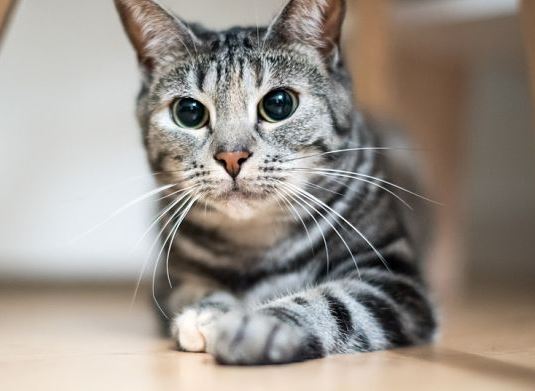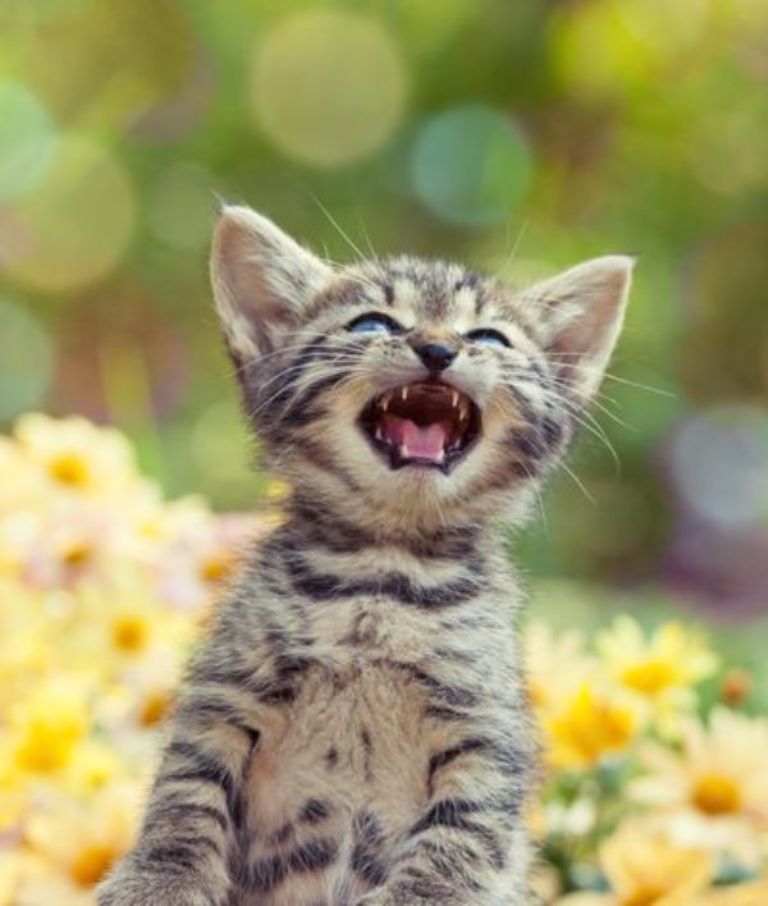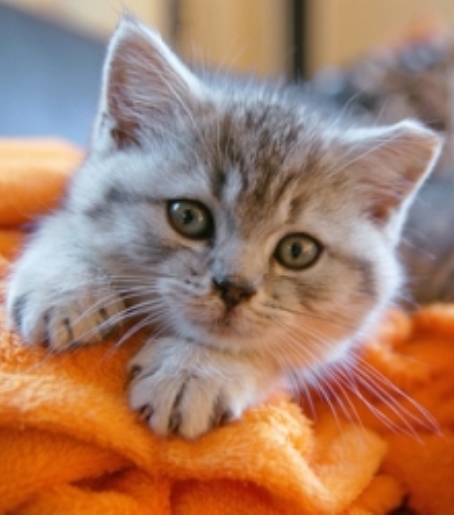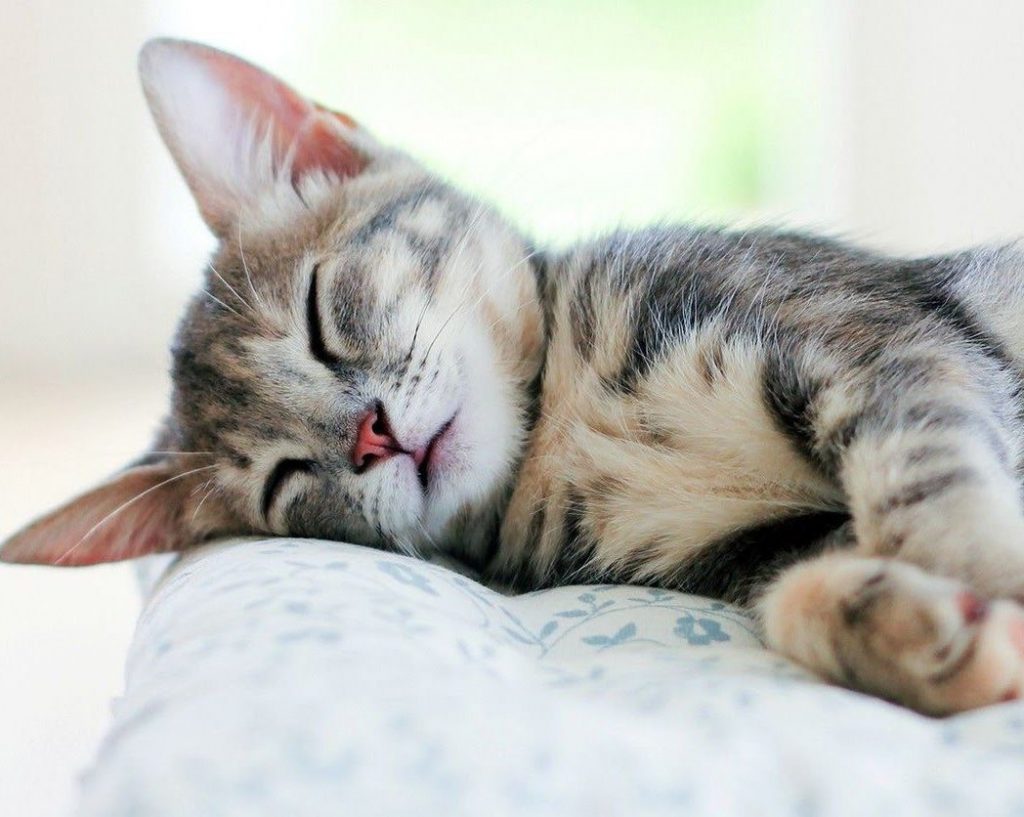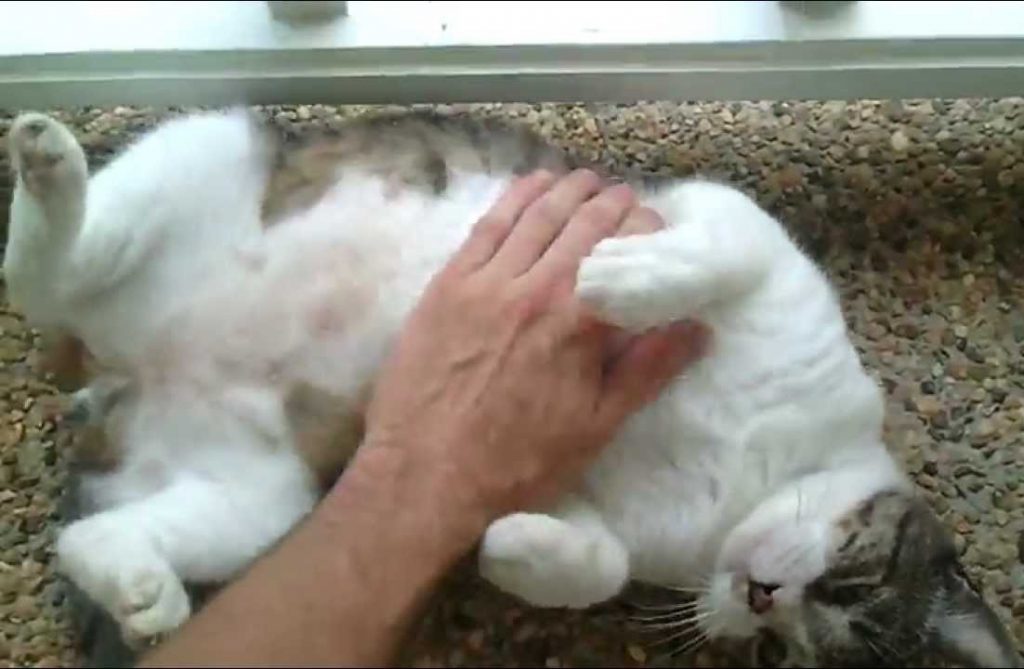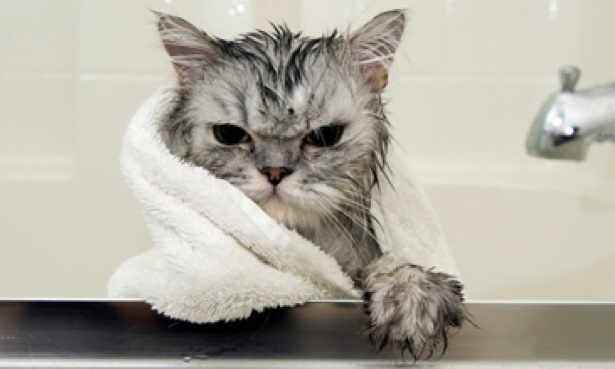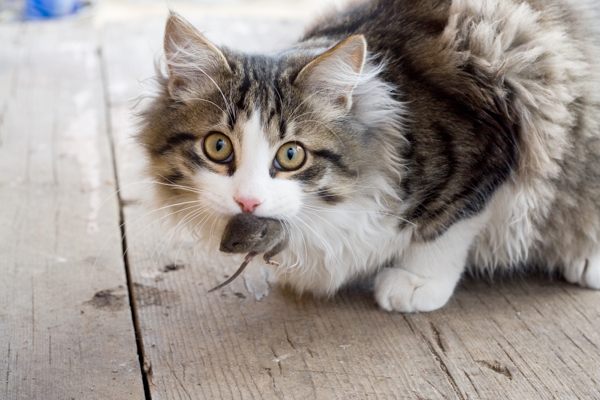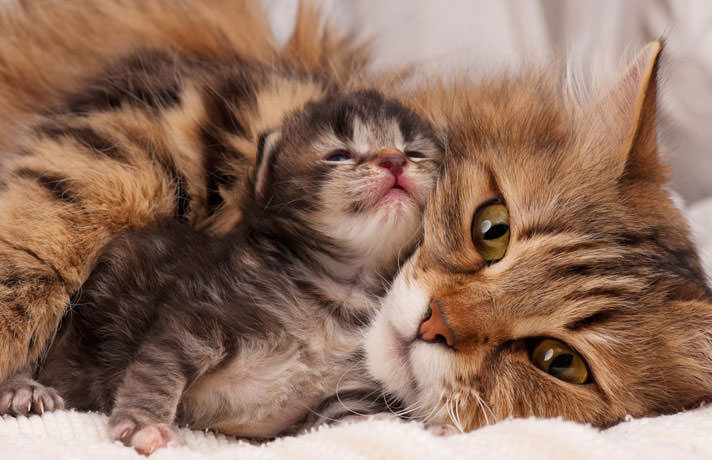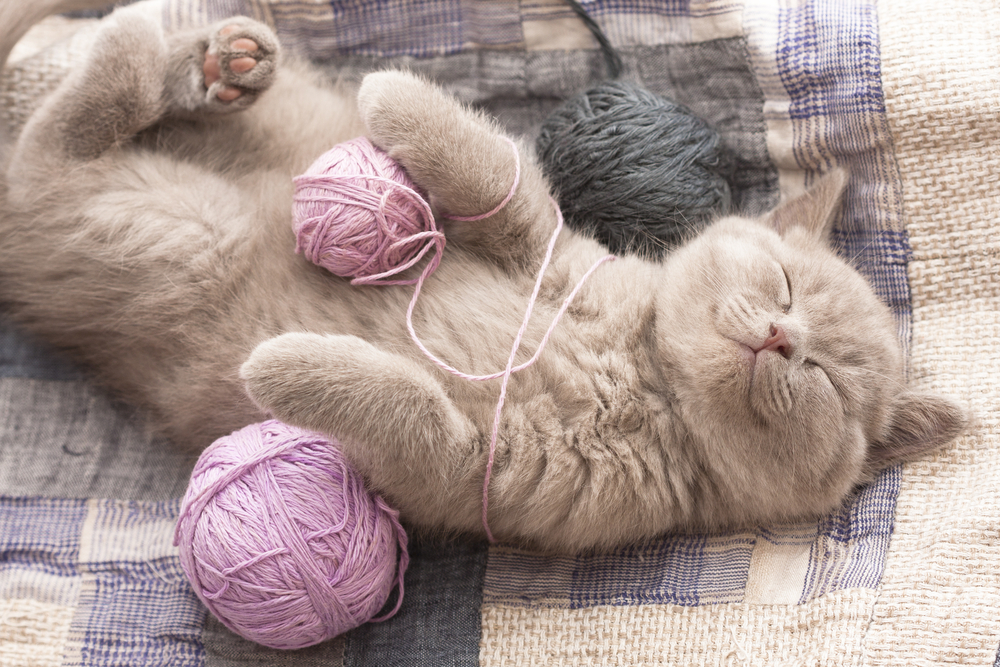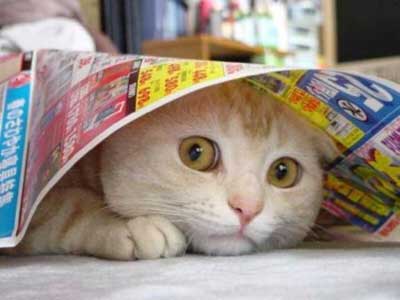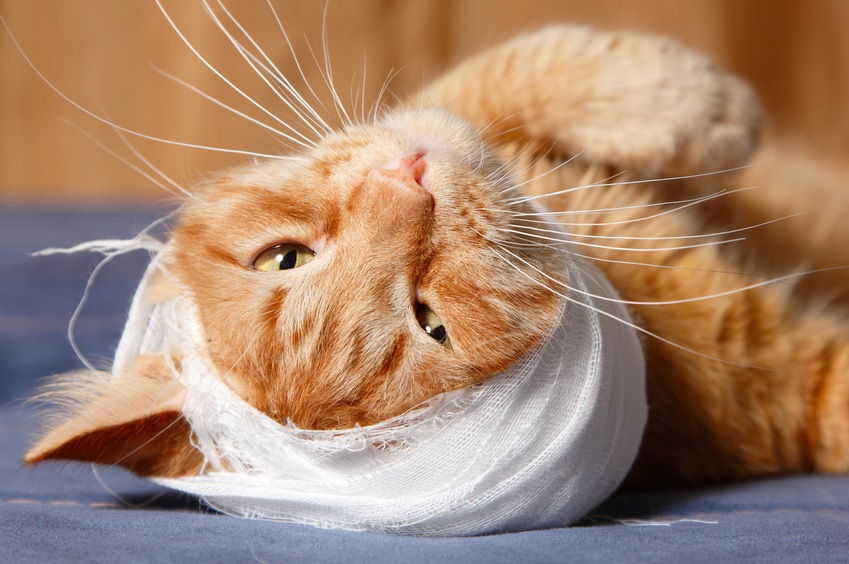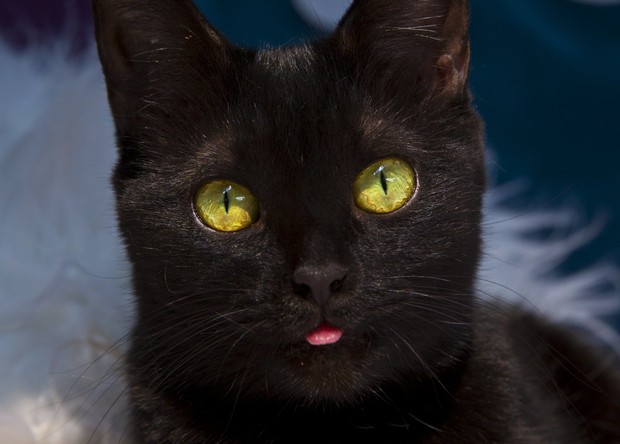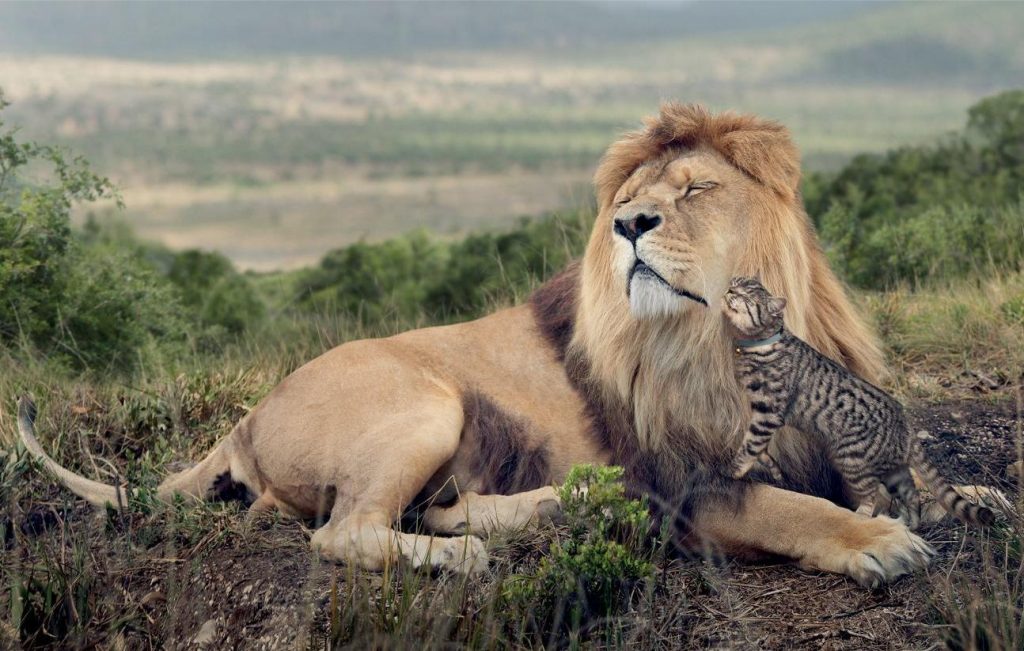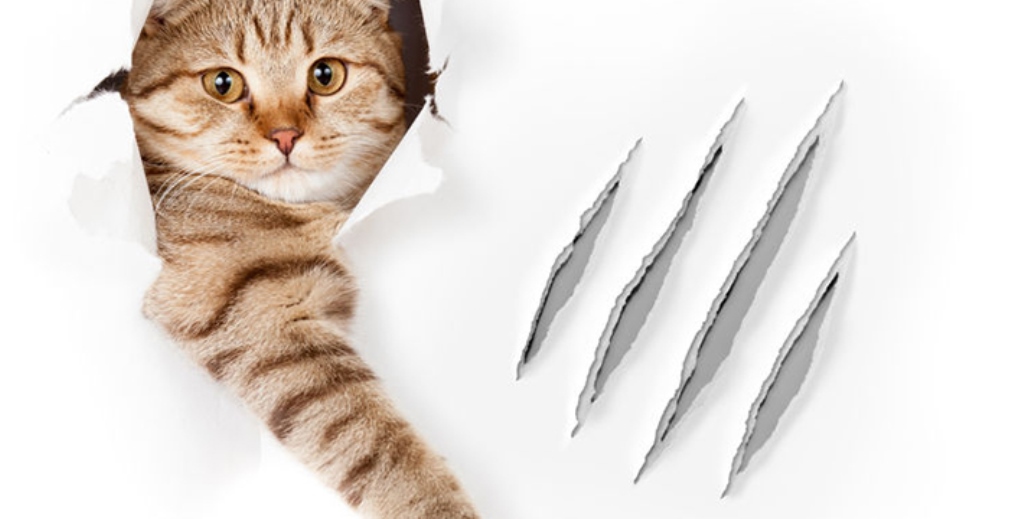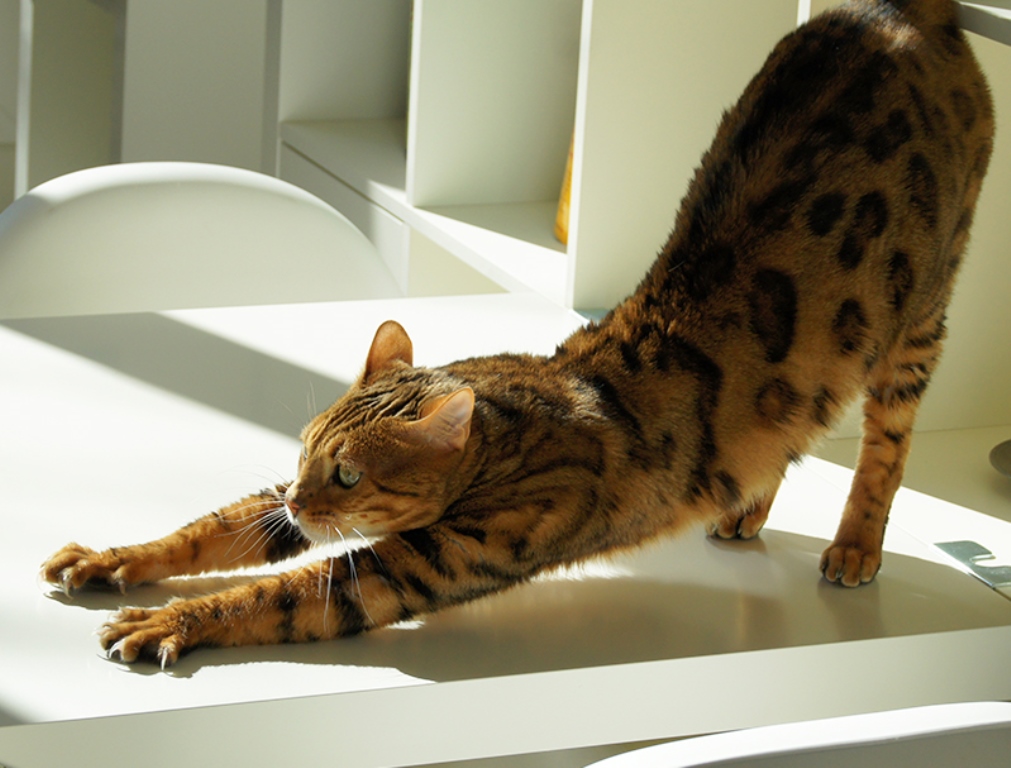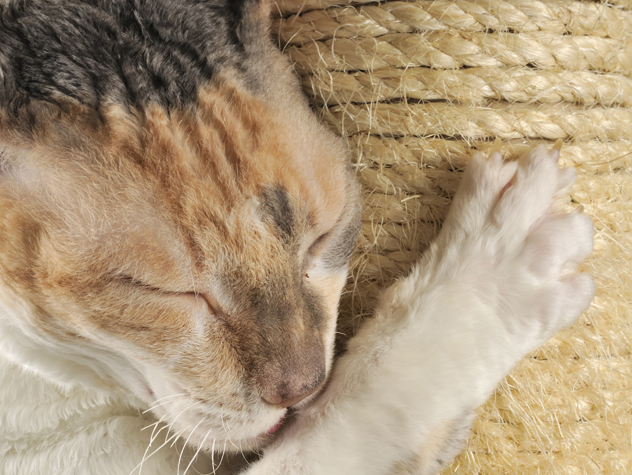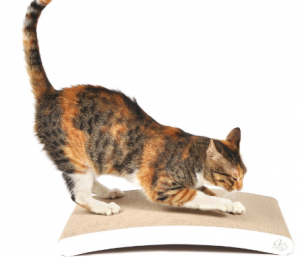Like the ears, the tail of a cat can really give out a lot of information. If you see a cat strolling along with his tail up, slightly hooked, like the top photo to the left, they are giving off a friendly greeting. This is a cat that is in a good mood and would probably enjoy some playtime. When a cat tucks it’s tail under it’s body they are nervous, and uncertain of the environment.
However, when reading a cat’s tail you may also need to pay attention to other body language. For instance, if the tail of a cat is straight up, like the bottom photo to the left, it could mean one of two things. Either the cat is confident and content or scared and ready to attack. How do you know which one? Simply look at the cat’s body language. If the cat has an arched back, it is warning you that they are ready to fight. A cat with a straight, relaxed back is happy and friendly.
Another way that a cat will use it’s tail to ‘speak’ to you is by the way they move their tail. Watching a cats tail movement can usually give you a lot of information about the cat. For instance, a cat with a tail that is going back and forth could mean either a fearful cat or a cat focused on an object. The difference is the rate in which the tail is moving. A tail that is whipping quickly back and forth is a warning to keep your distance. However, if the tail is moving in a slow swishing motion, the cat is likely focused on an object and preparing to pounce. Have you ever seen your cat’s tail slightly quiver, like a tiny, almost unnoticeable tail wag? This type of tail movement is a greeting to you, a way to say they are excited to see you. For more information on how to read the movements of a tail wag, visit Catster.com. With all the different ways a cat can speak to you with their tail, the best is when they wrap it around you or another pet. This is equal to giving a hug or wrapping your arms around a loved one. If you have a cat that does this, they truly love you and consider you part of their family!



